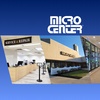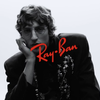Food, water, live animals and nuclear devices were all banned from MIT's Kresge auditorium last Thursday night.
Instead, in a ceremony where more than 1200 audience members were actually encouraged to heckle, master of ceremonies Marc A. Abrahams '78 and an entourage of Harvard Nobel laureates presented the fourth annual Ig Nobel awards.
According to Abrahams, editor of the Annals of Improbable Research, Ig Nobel Prizes are awarded to individuals whose achievements "cannot or should not be reproduced."
"I think there are a number of people who will spend the latter part of the evening looking back on their lives and thinking very hard about what brought them to this position," he said.
Abrahams started the annual Ig Nobel ceremony in 1991 with the support of Warren Seamans, director of the MIT museum. The prizes are a legacy from the estate of the legendary Ignatius ("Ig") Nobel, the inventor of excelsior (packing material) and co-inventor of soda pop.
"I think overall it was probably the weirdest single event I have ever seen in my life," said Ethan R. Mollick '97.
"There were so many respected dignified people acting so strangely in such a short period of time," Mollick said.
The ceremony included 30-second Heisenberg Certainty Lectures delivered by various academics, an interpretive dance of electrons starring Nobel laureates, an Element Fashion Show and a late-breaking research update that "One in 10 Ken dolls is gay."
"It is nice way of bringing science to the attention of the public," said Professor of Astronomy Margaret J. Geller.
Geller, who gave one of the Heisenberg lectures said, "It takes scientists off their pedestals, which is very important."
Special guests included designated heckler Ira Flatow, the host of National Public Radio's Talk of the Nation; James Knowlton, a returning Ig Nobel winner famous for his studies on penises of the animal kingdom; and a paramilitary force made up of Brownie Troop 1139.
Dudley R. Herschbach, Baird professor of science, and William N. Lipscomb, Lawrence professor of chemistry emeritus, were among the real Nobel laureates present.
Herschbach and Lipscomb were featured in a uniquely choreographed Dance of the Electrons along with 1993 Nobel laureate in medicine Richard J. Roberts and a group of scantily clad female dancers.
According to Robert B. Dimmick, who was in charge of the delegations at the ceremony, the presence of the real Nobel laureates is vital.
"The more (Nobel laureates) we get, the more legitimate this illegitimacy becomes," Dimmick said.
Read more in News
Suspect Arrested In Recent Theft At Hemenway Gym












